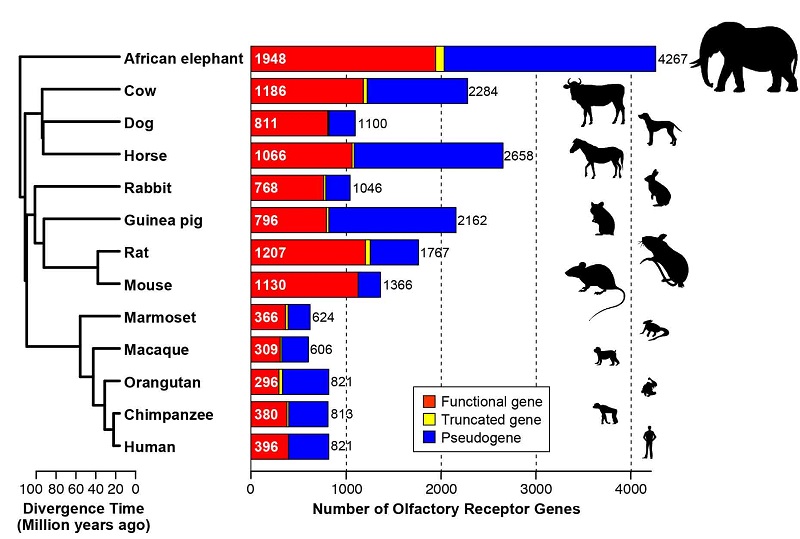

This section synthesizes some cool stuff (and fun things) we found while researching olfaction – enjoy 🤠
Biomarkers are physiological indicators – found in blood, fluids, or tissues – of biological processes. A evaluation metric for normal clinical function, biomarkers can be predictive, prognostic, or diagnostic. Indicators of conditions like cancer or adverse pharmacological responses, computational biomarkers – assisted by machine learning models and AI frameworks – are a rapidly advancing field of study.
Joy Milne arrived home from work one day and noticed her husband had a peculiar “musky” scent. She had never smelled it before and after pleading with him to shower, the smell still lingered. It wasn’t until 12 years later that he was diagnosed with Parkinson’s disease.
Attendance at a Parkinson’s disease support group was what linked the smell to the disease for Milne as she was overwhelmed by the scent coming off the many Parkinson’s patients in the room. Her husband agreed the scent must be linked to the disease somehow and they presented their discovery to a number of doctors and researchers.
Today, scientists have been conducting research to determine whether odorants on the skin may be utilized for early detection of Parkinson’s disease. Such a discovery is critical, as Parkinson’s currently lacks a significant biomarker.
Dogs can detect cancer in breath, skin, sweat, urine, blood, and feces. Currently, scientists are attempting to capitalize on the smelling capabilities of dogs to develop canine-trained machine learning algorithms called e-noses. E-noses work by combining principles of gas chromatography, an approach that enables chemists to distinguish between compounds, and artificial intelligence.
Analyzing olfactory receptor genes across species allows us to track evolutionary mammalian patterns. In comparing functional vs non-functional OR expression, we can isolate the olfactory range of each species.

Humans (the tenth bar from the right) realize a significantly smaller range of odorants than most species – a phylogenetic tree of OR gene divergence (shown below) illustrates the extent of this loss.

While humans still retain 821 OR genes, we currently have more pseudogenes for olfactory receptors than working ones. How frustrating (or wonderful) we never experience the broad spectrum of scents out there!!
Generally, females see a stronger sense of smell than males. Research into sex-discrepancies for olfaction offers 2 possible explanations:
Research into sex-based olfactory discrepancies is slowly advancing, with multiple studies currently evaluating the effects of birth control on female olfactory systems. Initial studies are contradictory (this study says no while this study says yes), but any exploration into sex-disaggregated data is a positive.